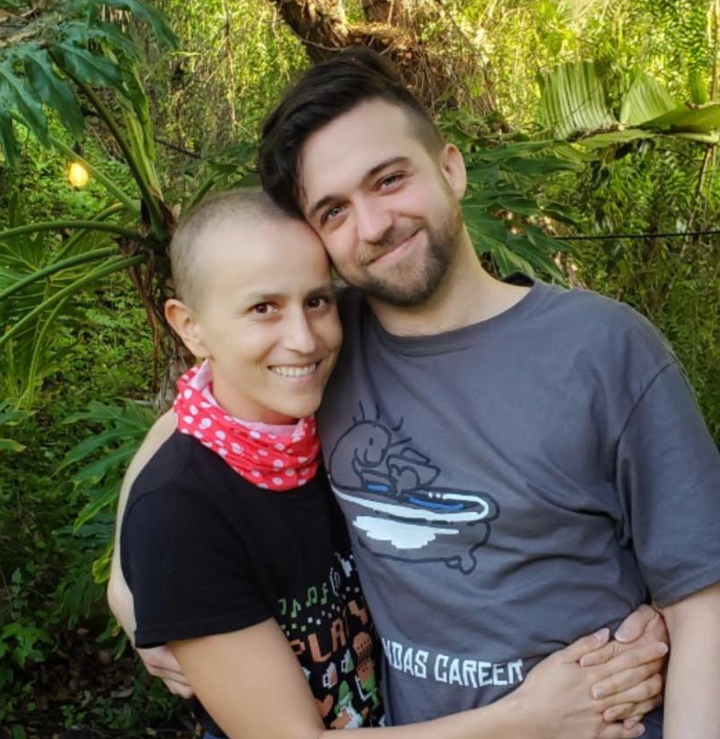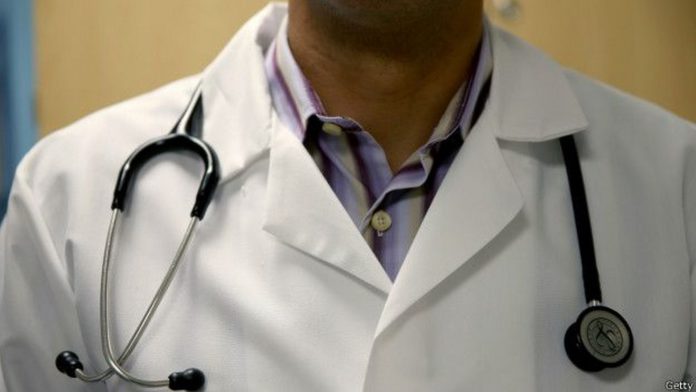Most doctors are intelligent, compassionate human beings, but they are human. And medicine is a business, which means doctors can be overworked, pressed for time, and dismissive of patient complaints, especially if that patient is a woman.
In my case, the casual dismissal of my symptoms almost cost me my life.
It was October 2019 when my new OB-GYN ― let’s call her Dr. Can’t Be Bothered ― gave me what I considered to be life-changing news.
“You have a two-centimeter tumor on your uterine cervix,” she said, without even a hint of concern. For me, those words felt like a knife to the gut. A tumor? Me? How?
Then her phone rang, and she left the room.
By the time she returned, tears had welled up in my eyes. “Do I have cancer?” I asked, terrified and confused. As a non-doctor, when I hear the word “tumor,” my first thought is cancer. Hers was not.
“No, no,” Dr. Can’t Be Bothered assured me. “This is not how cancer behaves.” Then she added a sentence I’ll never forget: “For you to have cancer at this age, with this medical history, it would be like winning the lottery.”
This did not make me feel better. She seemed unconcerned about the tumor growing in my pelvis, but I was not. She explained I would need a biopsy, but assured me it was probably fibroids, a benign growth, maybe a polyp, or a million other little non-cancer things.
I would have to go under anesthesia for the biopsy, and it would be an “all-day” affair. Not wanting this tumor-thingy hanging over my head, I asked to schedule the surgery as quickly as possible.
Dr. CBB once again told me there was no rush, even though the radiology report stated the tumor was “of concern.”
In fact, she was going on vacation for two weeks and her schedule was full. We would have to put off the procedure for at least four weeks. I asked if I could get in sooner ― perhaps a different doctor could perform the biopsy?
“It’s not necessary,” she said. “Just be patient.”
“I let it go ― after all, she’d gone to medical school and I hadn’t. She wore a white coat, and I was a 34-year-old whose work wardrobe still included yoga pants.”
She made me feel like I was overreacting like I was ignorant of how “these things work.” I peppered her with questions about the Big C, to which she kept saying, “No, no, that’s not how cancer behaves.”
I let it go ― after all, she’d gone to medical school and I hadn’t. She wore a white coat, and I was a 34-year-old whose work wardrobe still included yoga pants. It was not my place to argue with her.
On my drive home I called my mother. I explained everything the doctor told me, but I couldn’t stop crying. I felt that something was wrong ― like, really wrong. And I was angry the doctor wasn’t taking this seriously. My mother agreed.
On instinct, I called up my old OB-GYN. Sobbing, I explained my situation and begged for an urgent appointment.
When it comes to certain cancers, time matters. Forty-eight hours later I was once again sitting in a doctor’s office, only this time, it was a completely different experience.
My old doctor spoke to me with kindness and concern. He explained exactly what the ultrasound revealed, and went over all the tests he was about to perform, including another ultrasound, a colposcopy, and an in-office biopsy with no anesthesia and no surgery required. He even said to me, “I know you’re scared, but we’re going to do everything we can to figure out what’s going on.”
Turns out, I had won the lottery.
The biopsy revealed I had a very rare cancer called high-grade small-cell neuroendocrine. I would need a radical hysterectomy ― where they remove the uterus, cervix, ovaries, fallopian tubes, a third of the vaginal canal, and multiple pelvic lymph nodes ― along with adjuvant chemotherapy and radiation.
After my diagnosis, my entire world turned upside down. It was an onslaught of appointments, scans, and hard bathroom-floor crying. My imaging showed only “local disease,” which means it had not metastasized to other parts of my body. My surgical oncologist said she was relieved. “Often patients with neuroendocrine cancer walk in at stage 4 ― it’s that aggressive,” she said. “You’re lucky you came when you did.”

Indeed, that’s an understatement. Even with the quick biopsy, I ended up at stage 3C. My odds of survival were a mere 0% to 7%.
The truth is, high-grade small-cell neuroendocrine cancer is highly aggressive, with poor prognosis rates. Even at stage 1, the survival rate is only about 30%.
The time between my scans, which showed local disease, and my surgery, which found cancer in one lymph node, was just five days.
Had I waited for Dr. CBB to care about my condition, I would have been stage 4 at diagnosis and probably dead now. Median survival is less than 16 months.
Weeks later, after my surgery was completed, I finally got a call from Dr. Couldn’t Be Bothered’s office. They wanted to schedule the biopsy she’d put off.
I laughed. “Are you kidding me?” I asked. “I’m about to start chemotherapy!” Then I angrily hung up the phone.
I know I am lucky to be alive. I have now been cancer-free for two years. My oncologist recently said I was a “miracle.” In order for me to survive this cancer, everything had to go my way.
I was fortunate that the second doctor I saw spent over an hour with me, listened to my concerns, tested me for everything on the spot, and cared enough to pay attention to me.
If my surgery, chemotherapy or radiation had been delayed by four weeks ― as Dr. CBB wanted ― it would have cost me my life. Instead, a team of doctors stepped up and recognized a needle-in-a-haystack cancer.
My intention is not to vilify doctors, but rather the system they are forced to operate in. According to studies, 56% of primary care physicians spend less than 16 minutes with patients, and much of that time is spent filling out electronic health records. Indeed, the bureaucratic side of American health care is not what doctors signed up for.
Between growing pressure to see more patients, insurance pre-authorization codes, after-hours phone calls, portal messages, peer-to-peer insurance consults, patient paperwork and medical history reviews, many physicians are burned out.
“Women are underdiagnosed for depression, cardiovascular disease and many types of cancer, often seeing multiple doctors and waiting more than a year for a diagnosis.”
That said, studies have shown women are often dismissed in health care settings. They’re told severe abdominal pain can be chalked up to period cramps, while painful conditions like uterine fibroids, endometriosis and ovarian cysts go undiagnosed for months or years.
In fact, the American College of Obstetricians and Gynecologists estimates that endometriosis takes an average of six to 10 years for a diagnosis.
Not to mention, women in America have the highest maternal mortality rate compared to other developed nations, and for Black women, it’s even worse.
But the dismissal of women’s pain is not exclusive to gynecological or pregnancy-related conditions. Women are underdiagnosed for depression, cardiovascular disease and many types of cancer, often seeing multiple doctors and waiting more than a year for a diagnosis.
Women are 50% more likely to be misdiagnosed for cardiovascular disease than men, and 30% more likely to be misdiagnosed when presenting symptoms of a stroke.
Women have to advocate for themselves the moment they walk into a doctor’s office because that’s the health care system we live in. We have to fight to get tests, labs and appointments, all while being labeled pushy, hysterical and overdramatic.
And don’t even get me started on weight stigma. News flash: Not every condition can be solved by losing weight (cancer comes to mind). What’s more, too many women (and too many people in general) don’t have access to insurance, affordable health care, or the resources and time to take advantage of it, but that’s a whole other battle.
Ultimately, if battling a rare and deadly cancer has taught me anything, it’s to never stop fighting for yourself. I spent countless hours fighting with insurance, begging labs and imaging centers for earlier appointments, and emailing every oncologist in the country for help.
It’s your health and your life. If you have to ruffle a few white-coated feathers, so be it. You’re worth it.
– Taryn Hillin

